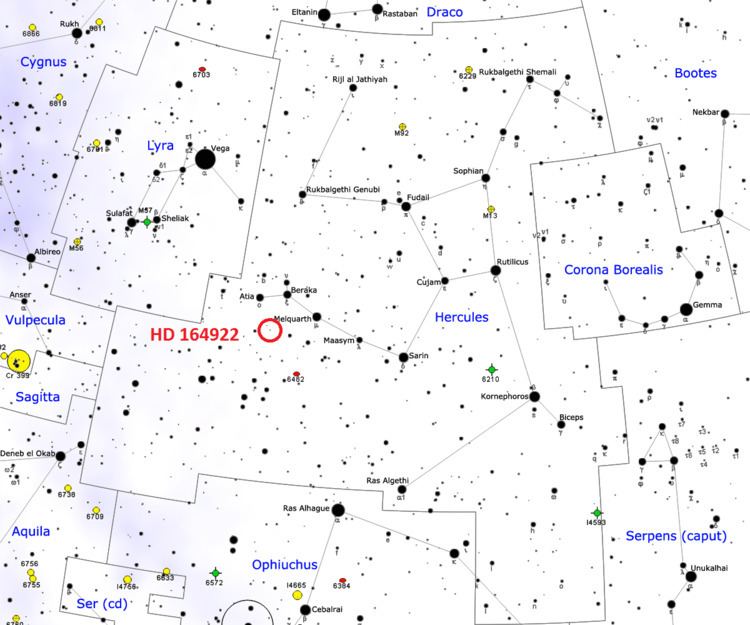Magnitude 7.01 Apparent magnitude (V) 7.01 | ||
 | ||
People also search for HD 154345, HD 156668 | ||
HD 164922 is a seventh magnitude G-type main sequence star in the constellation of Hercules. To view it, binoculars or a telescope are necessary, as it is too faint to be visible to the naked eye. It is 72 light years distant from the Earth. At an age of 13.4 billion years, it will soon evolve away from the main-sequence and expand to become a red giant. It is one of the oldest known stars in the Universe and one of the most ancient objects known in the Milky Way.
Contents
Nomenclature
The designation b derive from the order of discovery. The designation of b is given to the first planet orbiting a given star, followed by the other lowercase letters of the alphabet. In the case of HD 164922, only one was discovered, which was designated b, then a more inner planet, which was designated c. The name HD 164922 derives directly from the fact that the star is the 164,922nd star discovered in the Henry Draper catalog.
Stellar characteristics
HD 164922 is a G-type main sequence star that is approximately 87% the mass of and 99% the radius of the Sun. It has a temperature of 5293 K and is 13.4 billion years old. In comparison, the Sun is about 4.6 billion years old and has a temperature of 5778 K.
The star is metal-rich, with a metallicity ([Fe/H]) of 0.16, or 144% the solar amount. This is particularly odd for a star as old as HD 164922. Its luminosity (L☉) is 70% of the solar luminosity.
Planetary system
On 15 July 2006, a long period Saturn-mass exoplanet was announced orbiting around HD 164922. This planet orbits at 2.11 AU from the star with a low eccentricity value of 0.05.
Almost exactly ten years later in 2016, another exoplanet, though less massive then the first planet, was discovered orbiting farther in from the star. This planet has a minimum mass of nearly 13 times that of Earth, meaning it is possibly a Neptune-like planet.
